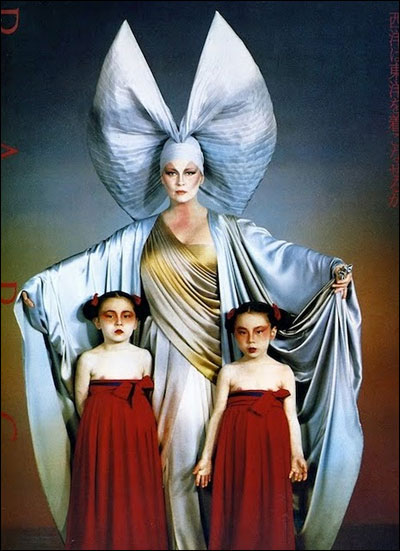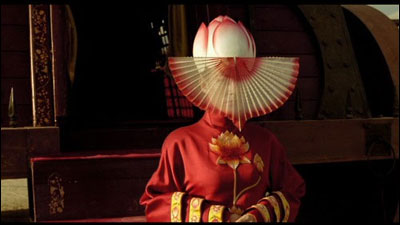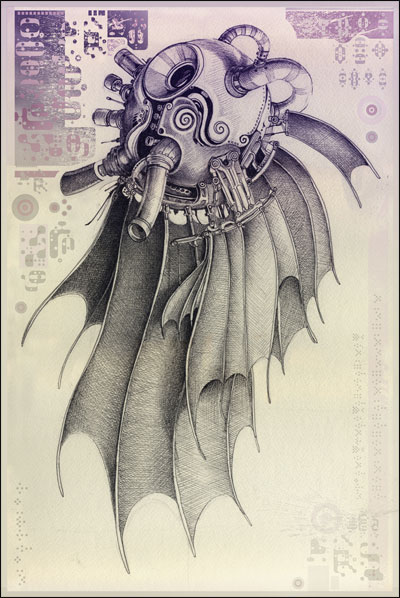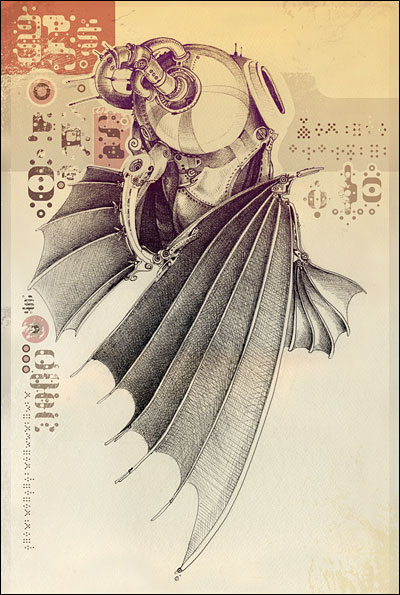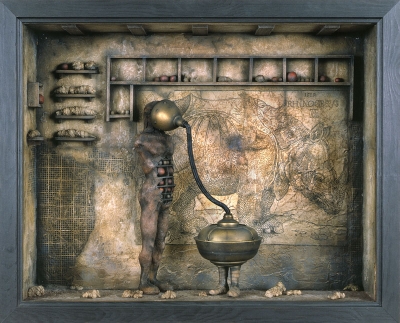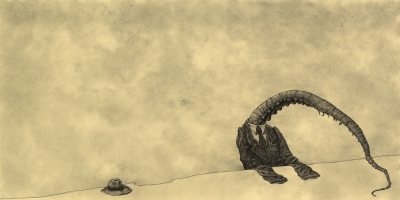The “Spirit Bomb” of Harajuku Culture
Featured previously on Coilhouse for her debut music video Pon Pon Pon, 19-year-old blogger-turned-singer Caroline Charonplop Kyary Pamyu Pamyu (also known is Kyary, or Carrie Pam) is back with a new music video for her single Tsukema Tsukeru.
According to Super Happy Awesome, the song is all about the application, appreciation, and effects of false eyelashes. Kicking off the video with a sparkly-lashed wink to Kanye’s Power (which was also parodied to great effect by Freddie Wong), Kyary celebrates the art of eyelash extension through lyrics (“It’s the magic in a type of eyelash / My confidence changes, the way I see the world changes”), choreography (plenty of jazz hands emulating the batting of full lashes), set design (with some terrifying CGI depictions of the (lash-bedecked) Hamsa Hand floating in the background), and, perhaps most potently, costume design (featuring an extra head on top of her wig wearing lashes, a rather anatomical-looking corset decorated with an eye pendant, and two giant false eyelashes on her boobs).
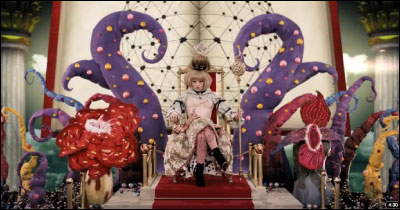
The same team that created Pon Pon Pon was responsible for Tsukema Tsukeru. The song was produced by Yasutaka Nakata, one half of the electronic duo capsule. The video was art-directed by Sebastian Masuda, a pioneer of “kawaii culture” who also founded Harajuku fashion label %6DOKIDOKI. Masuda and Kyary also recently collaborated on an exhibition titled Table of Dreams.
In describing his first meeting and subsequent collaboration with Kyary, Nakata calls her “the ‘spirit bomb’ of Harajuku culture.” (The spirit bomb, the translator explains, “refers to an attack in the classic anime ‘Dragon Ball’, which channels the energy of surrounding life forms into a powerful sphere.”) Kyary’s success, writes Nakata, lies in her ability to infect people with enthusiasm for her projects. “I think it’s because everyone who gathers around Kyary feels like, ‘if I were with Kyary, I’d be able to express things that are new to me.’ That is, of course, how I feel too. So it’s different from a collaboration, and – to tell the truth – even saying that I produce her has a different meaning. The closest I can get is saying, ‘I’m doing it just for the fun of it.’ I feel like Kyary has this power in her to involve people that way.”
See also:
[via Nicole Aptekar]




